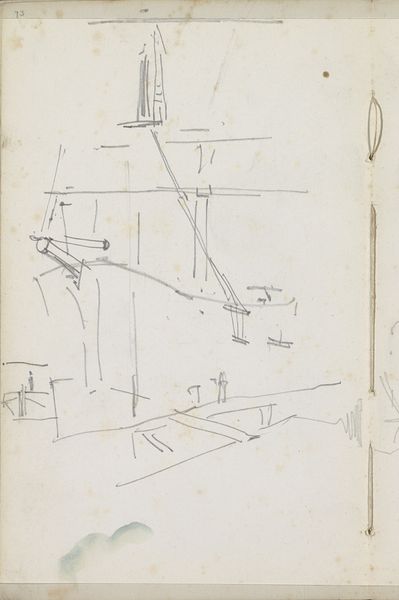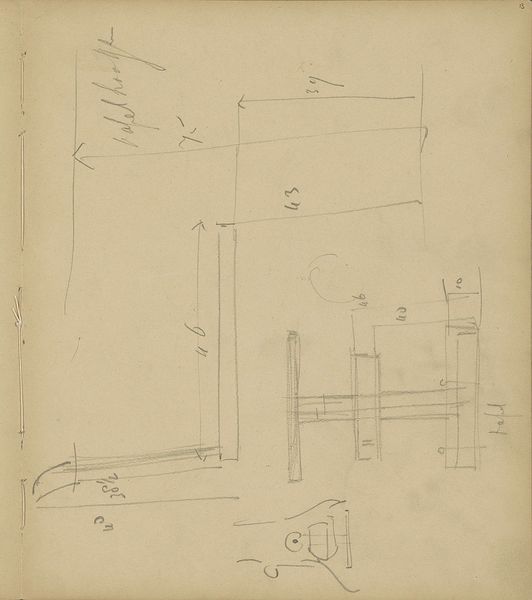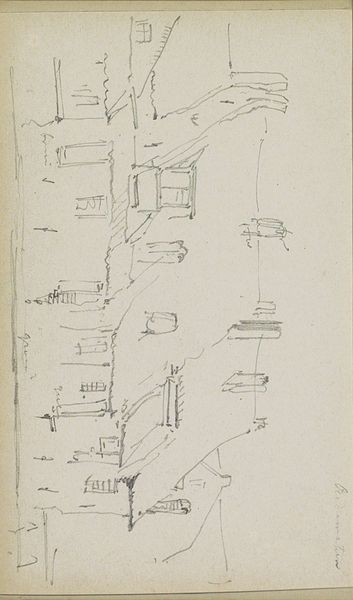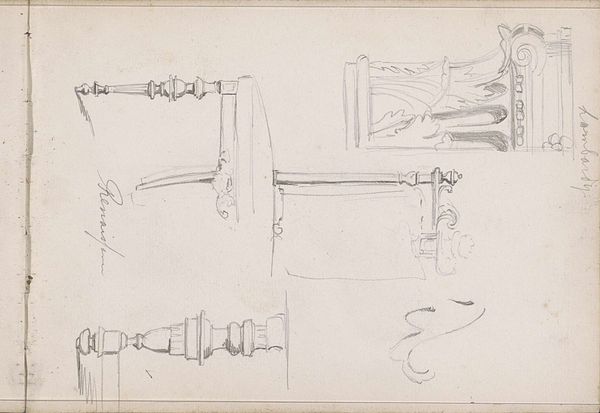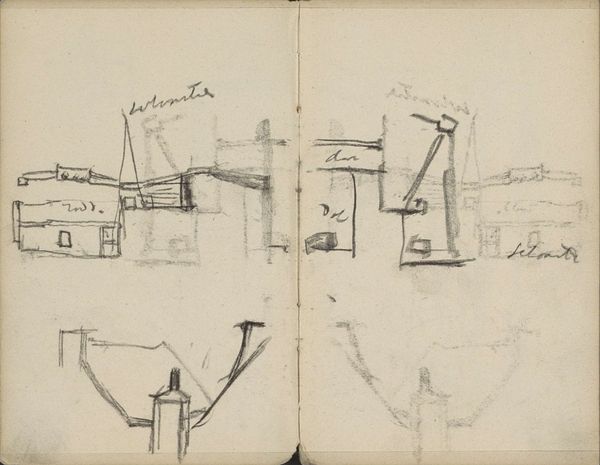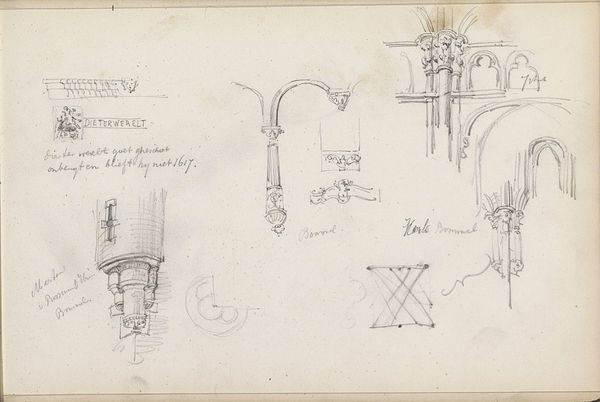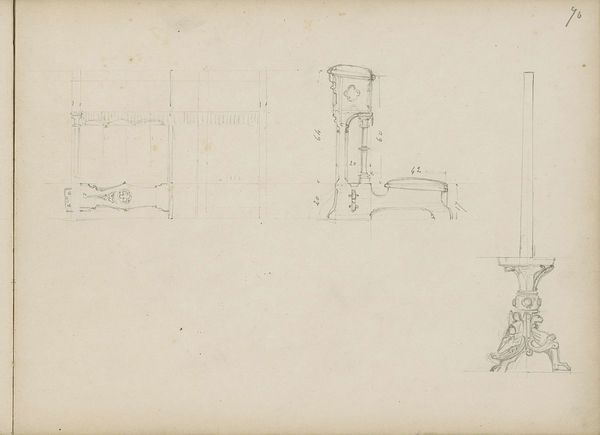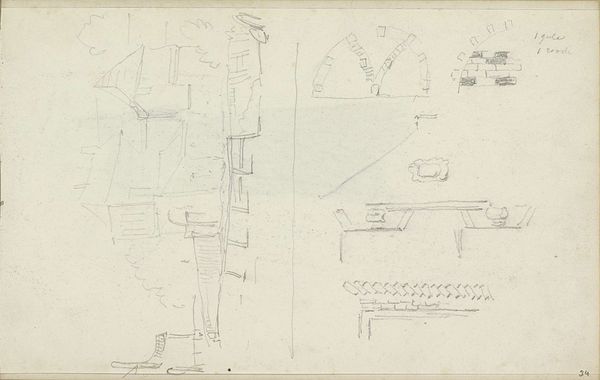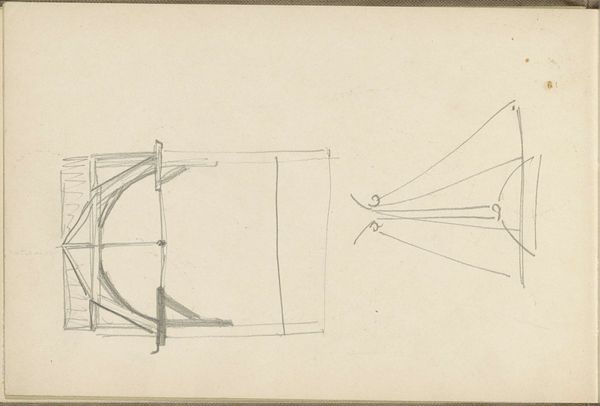
drawing, paper, pencil, graphite
#
drawing
#
aged paper
#
toned paper
#
light pencil work
#
quirky sketch
#
pencil sketch
#
sketch book
#
landscape
#
paper
#
personal sketchbook
#
idea generation sketch
#
sketch
#
pencil
#
line
#
graphite
#
sketchbook drawing
#
sketchbook art
Copyright: Rijks Museum: Open Domain
Editor: This is "Houtconstructies en een klokgevel" by Isaac Gosschalk, dating from 1862 to 1867. It’s a pencil drawing on paper. There’s something very intimate and preparatory about it, like a glimpse into the artist's sketchbook. What strikes you most about it? Curator: What intrigues me is how Gosschalk, a figure working amidst the architectural and social transformations of the 19th century, uses this "sketchbook art" to capture the vernacular. It speaks to a rising interest in preserving and studying local building traditions as industrialization swept through Europe. Editor: So, it’s not just a technical drawing, but a record of something socially significant? Curator: Precisely. These aren’t idealized architectural renderings. They seem like observations, almost anthropological, of everyday structures. Notice the "aged paper". It hints at the layers of historical context embedded within this image, suggesting how even a simple sketch becomes a document of cultural transition. How do you see this within the broader art discourse of the time? Editor: I see your point. I suppose I had initially viewed this as purely formal, but you are nudging me to see how images like this also helped construct a visual narrative about Dutch identity during that period. The architecture becomes almost like a portrait of the society itself. Curator: Indeed. This is why it’s critical to investigate what Gosschalk and his contemporaries were showing and preserving in a rapidly modernizing world. Art doesn't exist in a vacuum; it interacts with politics and culture. Considering it that way makes the work much more interesting, I think. Editor: Definitely! It's helped me appreciate how this seemingly simple sketch participates in a bigger dialogue about history and cultural heritage. Thanks!
Comments
No comments
Be the first to comment and join the conversation on the ultimate creative platform.
